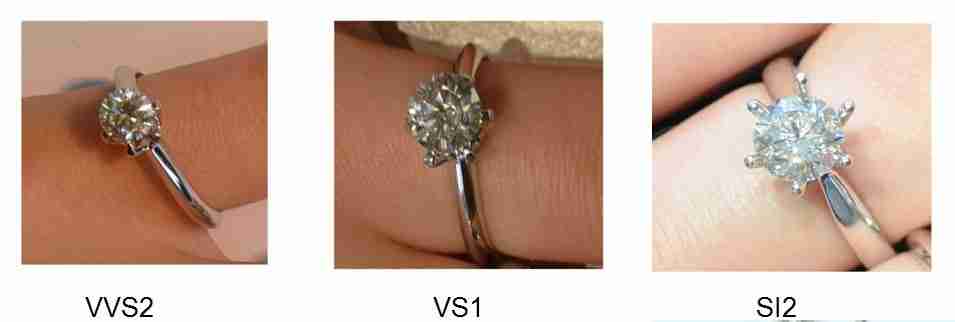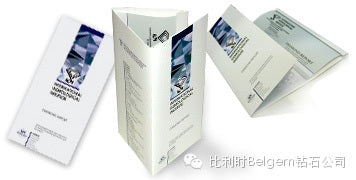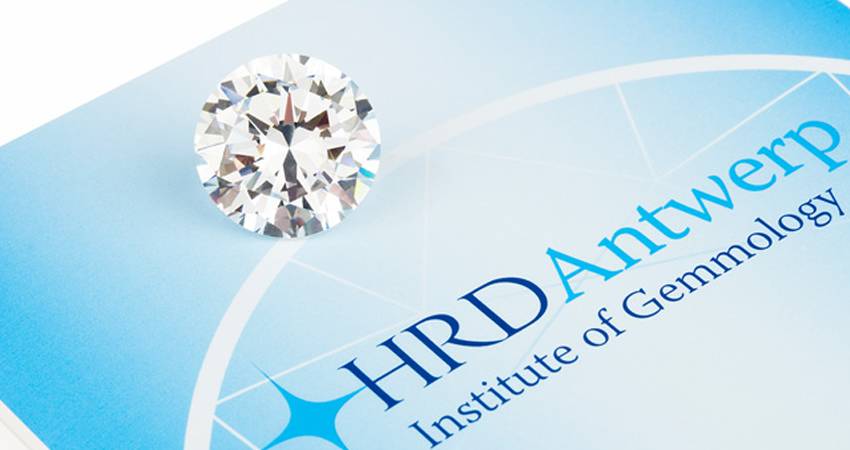
Many people often get caught up in worrying about a diamond’s clarity when making a purchase, thinking that if they’re spending so much money, they should at least get a diamond with a clarity grade of VS or higher.
I believe that if money is no object, aiming for the highest color and clarity grades is a sure way to avoid any regrets. However, this approach isn’t practical for everyone. Most people have a limited budget, so the question becomes: how can you get the best value for your money when buying a diamond within a budget?
First of all, it’s essential to understand how diamond clarity is graded, as this knowledge is very important when choosing a diamond. Clarity directly relates to the inclusions inside the diamond. Factors such as the location, number, size, color, orientation, and visibility of these inclusions all affect a diamond’s clarity grade. According to widely accepted grading standards, clarity is divided into eleven different levels.
Among all the clarity grades, the highest is called Flawless (FL). Diamonds with this grade are completely free of any inclusions or blemishes, making them truly exceptional and rare.
The next grade is called Internally Flawless (IF). Diamonds in this category have no internal inclusions, with only very minor blemishes on the surface or edges.
The next level is called Very, Very Slightly Included (VVS1/VVS2). For the grades Flawless (FL), Internally Flawless (IF), and Very, Very Slightly Included (VVS1/VVS2), only highly experienced gemologists can detect inclusions under 40x magnification.
Next comes the Very Slightly Included (VS1/VS2) grade. Diamonds in this category can be seen to have inclusions only with difficulty by experienced gemologists using a 10x loupe and 40x microscope.
Next is the Slightly Included (SI1/SI2) grade. Diamonds in this category have inclusions that trained gemologists can observe using a 10x loupe. From IF, VVS, VS to SI, the inclusions in these four grades are not visible to the naked eye.
The lowest grade is Included (I1/I2/I3), where inclusions are visible to the naked eye without any magnification.
In terms of value, diamonds with higher clarity grades naturally command higher prices. However, flawless natural diamonds are extremely rare because during their formation, it’s nearly impossible to avoid the intrusion of other materials due to external environmental factors. The only thing that can be done is to carefully cut away the parts with more inclusions during the cutting process, preserving the clearer sections of the rough stone. This scarcity is what makes high-clarity diamonds so valuable.
For those with a limited budget, is it really necessary to choose a diamond with high clarity? Most people buy diamonds to wear, not to keep locked in a safe. Let’s take a look at how diamonds of different clarity grades appear under 10x magnification and after they are set in jewelry.


Clarity comparison chart under 10x magnification
We can see that diamonds of different clarity grades show little difference in appearance once set and worn. Generally, the comfortable distance between people is about one meter, at which point the visual difference in clarity becomes even less noticeable.
So, how big is the price difference?
-
A 1-carat, D color, IF clarity diamond is priced internationally at around $27,500.
-
A 1-carat, D color, SI2 clarity diamond is priced at about $7,100.
This clearly shows that, regardless of the subtle visual differences, the price gap is significant and easy to notice.





